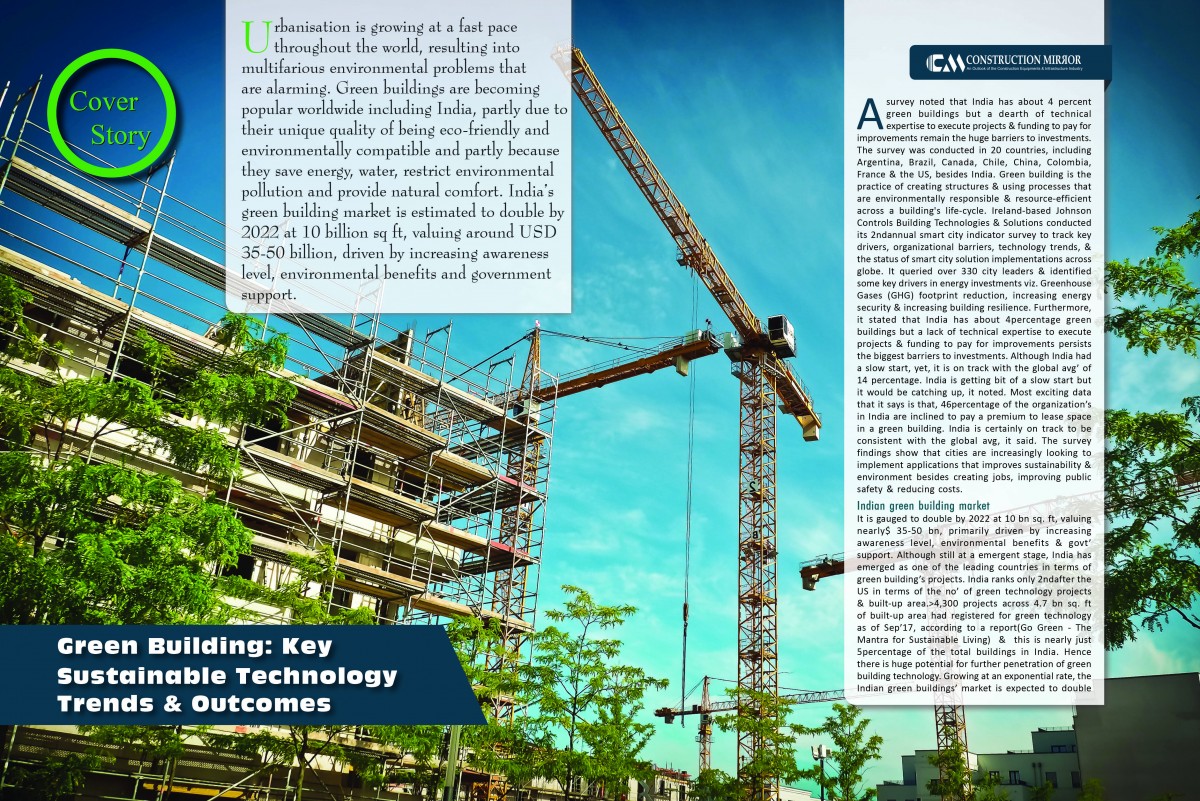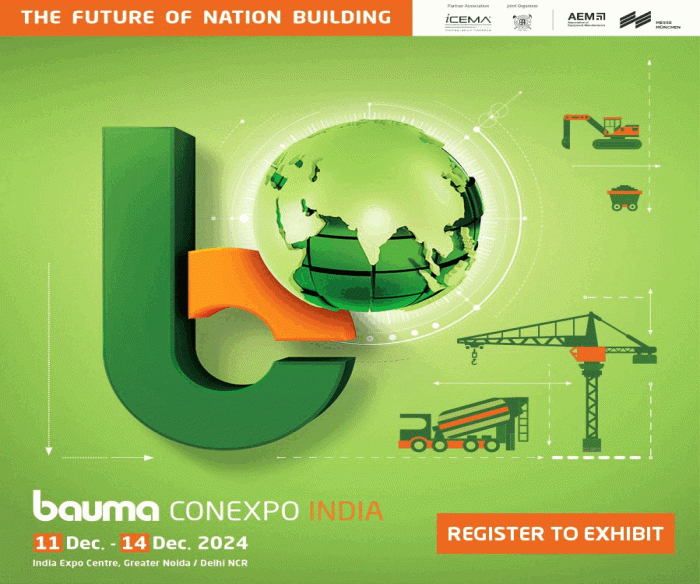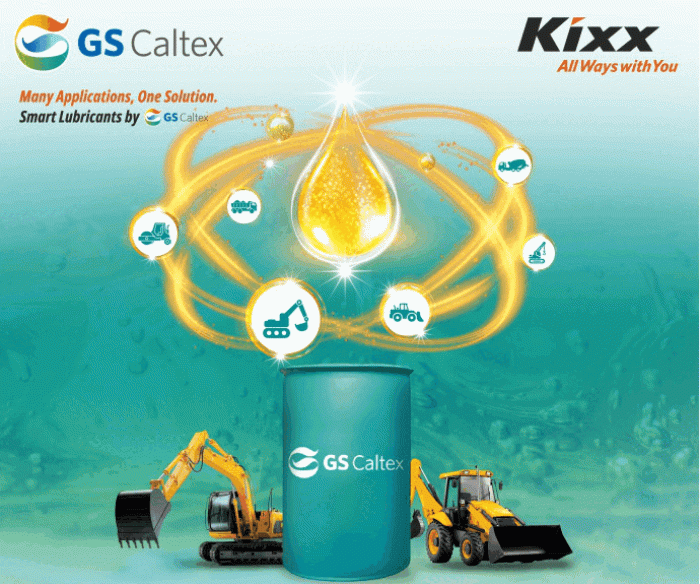Green Building: Key sustainable technology trends & outcomes
A survey noted that India has about 4percentage green buildings but a dearth of technical expertise to execute projects & funding to pay for improvements remain the huge barriers to investments. The survey was conducted in 20 countries, including Argentina, Brazil, Canada, Chile, China, Colombia, France & the US, besides India. Green building is the practice of creating structures & using processes that are environmentally responsible & resource-efficient across a building's life-cycle. Ireland-based Johnson Controls Building Technologies & Solutions conducted its 2ndannual smart city indicator survey to track key drivers, organizational barriers, technology trends, & the status of smart city solution implementations across globe. It queried over 330 city leaders & identified some key drivers in energy investments viz. Greenhouse Gases (GHG) footprint reduction, increasing energy security & increasing building resilience. Furthermore, it stated that India has about 4percentage green buildings but a lack of technical expertise to execute projects & funding to pay for improvements persists the biggest barriers to investments. Although India had a slow start, yet, it is on track with the global avg’ of 14 percentage. India is getting bit of a slow start but it would be catching up, it noted. Most exciting data that it says is that, 46percentage of the organization’s in India are inclined to pay a premium to lease space in a green building. India is certainly on track to be consistent with the global avg, it said. The survey findings show that cities are increasingly looking to implement applications that improves sustainability & environment besides creating jobs, improving public safety & reducing costs.
Indian green building market
It is gauged to double by 2022 at 10 bn sq. ft, valuing nearly$ 35-50 bn, primarily driven by increasing awareness level, environmental benefits & govt’ support. Although still at a emergent stage, India has emerged as one of the leading countries in terms of green building’s projects. India ranks only 2ndafter the US in terms of the no’ of green technology projects & built-up area.>4,300 projects across 4.7 bn sq. ft of built-up area had registered for green technology as of Sep’17, according to a report(Go Green - The Mantra for Sustainable Living) & this is nearly just 5percentage of the total buildings in India. Hence there is huge potential for further penetration of green building technology. Growing at an exponential rate, the Indian green buildings’ market is expected to double & may reach nearly 10 bn sq. ft by 2022, valued into$ 35-50 bn.
Green building is the practice of using processes & technologies that are environment friendly & energy efficient throughout the building’s lifecycle from siting to design, construction, O & M, renovation & deconstruction. Leadership in Energy and Environmental Design (LEED) USA, Building Research Establishment Environmental Assessment Method (UK), German Sustainable Building Council (Germany) & Comprehensive Assessment System for Built Environment Efficiency (Japan) are a few of the key global entities that define, categorize & certify green buildings across different countries. While in India, it is Indian Green Building Council (IGBC) & Green Rating for Integrated Habitat Assessment (GRIHA) that define green building norms. These buildings can improve the environment & ecology in many ways, reduces energy consumption by 20-30percentage, water usage by 30-50percentage & significantly reduce waste generation by extensive recycling. Such buildings may cost higher by up to 15percentage than conventional buildings. But, the long-term benefits such as low operating costs along with potential health benefits for occupiers, make it a viable option.It is said that growth of this sector in India would be driven by increasing awareness, environmental benefits, govt’s support, subsidies & compulsions. Besides, improving affordability is also a factor. It also believed that that countries with more population & limited resources will be to adopt green buildings’ practices faster. Realty development is one of the biggest consumers of natural resources & generates significant volume of wastes & pollutants. It alone gobbles about 40percentage of natural raw materials, 25percentage of water & 35percentage energy resources. Additionally, it emits 40percentage of wastes & 35percentage of GHG while it can reduce its negative ecological footprint by adopting green building technologies.
Factors influencing growth of green buildings in India
Govt’ push to have 200 mn sq. mtrs of green certified buildings by 2022.States beginning to build awareness & provide tax incentives & subsidies to encourage investment in green buildings. Nation-wide green building policies have existed for many years but rate of adoption has been slow due to lack of a level playing field. Strong growth projected in construction industry with focus on industry, residential & transport.70percentage of buildings needed by 2030 yet to be constructed. Significant potential in residential construction with ‘Housing for All’ program requiring 20 mn urban & 10 mn rural homes. Real GDP growth expectations avg’ 7.8percentage a year for 2018-23. Pick-up in pvt’ consumption & gross fixed investment from 2018 as banks balance sheets improve. Rapid urban growth with special initiatives for developing affordable housing. Push towards scaling up green bond issuances against backdrop of rapid urban growth with encouraged pvt’ sector participation. Stress on phasing out subsidies & govt’ intervention to encourage pvt’ sector participation. GRIHA- Indigenous rating system to promote & certify green buildings. IGBC- Implements certification services & training programs. LEED-Partnerships with local developers to provide certifications. International Finance Corporation (IFC) organizes the Sustainable Housing Leadership Consortium & promotes Excellence in Design for Greater Efficiencies (EDGE).
- India is at the threshold of a commercial & residential construction boom.
- 700 mn sq. mtrs of commercial building space built over the last 10 years with 40percentage of the building stock that will exist in India by 2037 yet to be built.
- Govt’s ‘Housing for All by 2022’ program can act as a catalyst to propel growth in residential building.
- Net Profit Margins in Realty is higher than total Indian market.
- Green building construction is spread throughout the country but more prevalent nearly large Metros like New Delhi, Mumbai, Bangalore & Chennai.
- High demand for green buildings due to rising consumer awareness.
- Strong push by govt’ to implement ‘Housing for All’ program to provide affordable housing to lower income groups by 2022 that req’ new construction of 20 mn urban homes & 10 mn rural homes.
- India has the 3rdhighest green building growth rate in the world.
- Govt’ has increased focus on increasing energy efficiency in industry.
- Environmental regulations introduced to set min’ energy std’s for new commercial buildings.
- IFC estimates investment opportunity of $1.4T, with $1.25T in the residential & $228 bn in the commercial sector.
- Green Bonds is a key tool for Climate finance; India has $3 bn Green Bond market as of 2016, 7th largest in the world.
- PNB Housing Finances raised RS 5Bn from IFC, becoming 1stIndian housing finance Co. to issue green bonds.
- High current cost of borrowing: Indian CoS borrow at 220 basis points > China.
- Only 14percentage of total green bond financing in India utilized towards low carbon buildings, leaving significant untapped potential.
Rating System:
GRIHA: Thirty-One rating criteria on a 100-point system with each criterion assigned certain points. Buildings, in design stage with built up area > 2,500 Sq. mtr., eligible, III stages for evaluation. Fast track environmental clearance available through pre-certification.1,000 registered projects covering approx. 40 mn sq. mtrs. Other is the ECBC, originally introduced in May’07 by Bureau of Energy Efficiency (BEE).Revised in Jun’17 because of slow adoption of old code due to different jurisdictions at state & municipal levels & lack of stakeholder awareness. Varied approaches exist at state level - Haryana offers up to 25percentage additional Floor Area Ratio while Pimpri Chinchwad Municipal Corporation offers up to 50 percent discount on premium building permission charges. Energy Conservation Building Code (ECBC) cells to be set up to coordinate State & Center level initiatives & establish level playing field.
Triggers to increased levels of green building
Most Influential Triggers: Top triggers are client demands & environmental regulations. This demonstrates that green building market is equally influenced by the pull of market & push of regulations.
Moderately Influential Triggers: A cluster of IV triggers are moderately influential. Healthier Building sis 3rd most influential, demonstrating that creating healthier buildings is a goal of building green. More architects select this among their top 3 triggers than owners, engineers/ contractors. Market Demands is yet other trigger wherein percentage selecting this trigger among their top 3 has dropped steadily since 2008, while influence of client demands remains high, stating that clients play a greater role in driving green building globally than does general market pressure. This trigger is most influential with contractors. After a sheer drop into 2008 & 2012, the percentage who believe doing the right thing is a top trigger for future green building activity remains steady at about one quarter. While, market factors have become more influential over time, the desire to build green to have a positive impact still remains an imp’ driver. Especially true for architects & owners, who often select this trigger than engineers & contractors. And roughly the same percentage in 2018 find lower operating costs to be an imp’ trigger as those in 2015, demonstrating the ongoing importance of lower operating costs to support a business case for green building investments. Like other triggers that impact financial performance of building like higher asset values, higher rents & higher occupancy rates, lower operating costs is most frequently selected as a top trigger by owners.
Less Influential Triggers: Corporate factors like internal corporate commitment, branding/PR & even higher building values are only top triggers for a relatively small percentage of people. Additionally, while the percentages selecting market transformation & marketing/PR are quite consistent as they are significantly lower than those in 2012 & 2008.This suggests a maturation of green building in most markets, where it has become more commonplace & hence is no longer considered a transformational approach nor likely to directly boost marketing/PR efforts. It is worth noting that the 2 triggers selected by the fewest respondent’s higher rents (5percentage) & higher occupancy rates (4percentage) only apply to commercial realty that is likely to account for their low performance since many may not work on those types of projects.
2 most imp’ triggers for future green building activity in India are environmental regulations & healthier buildings. India notably exceeds the global avg’ for each of these triggers. Strong performance of environmental regulations & relatively low performance of client demands, along with data on green market activity, suggest that India is still an emerging green market overall. Now, it is the pull of regulations rather than expectation of the market driving activity. Yet, strong emphasis on healthier buildings reveals that those doing green buildings in India are tied into larger global trends, where health has emerged as a top concern. Given the importance of work in which productivity is actively measured, such as call centers, in India, it is not surprising to see healthier buildings as a strong trigger. Also, several countries that struggle with air quality issues place emphasis on the indoor environment as part of their green projects.
Social & environmental reasons
Improving occupant health & well-being a top environmental reason for building green. Encouraging sustainable business practices one of the top social reasons for building green. These 2 are consistent with the global avg’s, but they again reinforce the importance of healthier buildings in this market. Reducing energy consumption, water consumption, protecting natural resources, are few environmental reasons. Indians are more conservative about their expectations for one-year operating cost savings for new green & retrofit projects than they were earlier, bringing them closer in line with global avg’s. Their 5-year expectations are more consistent for new green projects, but have also shifted down slightly for green retrofits. While they are more conservative about payback periods on new projects than on green retrofits, perhaps because that market is still relatively small among these respondents.
Key sustainable technology trends & outcomes
Energy Performance: Not surprisingly, improved energy performance in buildings is still a top outcome. The notion of net zero, near zero & energy positive buildings is clearly accelerating. Distributed energy production through renewable is also another ambitious trend observed.
Building Occupant Impacts:Attention to the health & well- being of building occupants is a primary concern. Additionally, ways to influence occupant behavior to improve building performance are also imp’. Building developers & owners are expected to become increasingly sophisticated, taking a more holistic approach to address the pressing needs of lowering their carbon footprint, improving indoor air quality & offering a healthy occupant experience.
Flexible Space:Demand for spaces that can be flexible & adaptable. Address-less offices, in which occupants choose spaces to work in that meet their immediate needs.
Transparency about material components & lifecycle impacts: Technology can help address the challenges in understanding the makeup of the materials to choose & their likely health impacts. No such a good technology solution to this challenge, but hopeful about that potential.
Scaling Up:A look beyond the building envelope to understand green performance of neighborhood/ city scale, & to understand how their buildings are contributing. How does not only the individual building perform, but how does it influence the context. An interest in community-scale kind of impacts looking at an entire urban environment & how do to evaluate design decisions based on a super- connected environment.
Early analysis tools:By far, the most widely seen technologies improving green building performance are the early analysis tools available for use with BIM. These include many aspects of building performance, with the most commonly uses being energy analysis & day lighting.
Integration into the Model:Integration of early analysis tools & increased ease of use allows becoming part of the dialogue throughout the design process & the biggest benefit is that, these technologies allow for an iterative process which is a process for exploration.
Ability to Conduct Analysis as Early as Possible in the Design Process:Biggest benefit coming from “the shift toward earlier phase analysis that can be done in-house by architecture & not solely relegated to consultants. Even though the limited parameters available in the very early design stages may not be able to yield completely accurate forecasts of energy consumption, they can be very valuable from a comparative perspective: It allows to look at the constraints & opportunities of the project in 3D instead 2D. These tools are valuable to improving performance at early stage.
Demonstrate Impact to Clients of Early Design Decisions: Another imp’ benefit of engaging in early energy analysis is the ability to show clients impacts of early, key design decisions, such as building placement & mapping. Being able to perform these functions “on the fly” in front of clients helps them to demonstrate the value of the choices being made & how they will impact final building performance.
The Potential of Generative Design: The technologies that are believed will have the greatest positive impact on sustainable outcomes in buildings in the next 5 years is generative design which is the most exciting development. It is a goal-based tools, in which one could input their project goals & what he know about a project at an early stage (such as the site, the square feet, the no’ of buildings & the no’ of stories) into the system & have the software show the top solutions to achieve those goals. Generative design is going to further augment ability of designers to make better & more informed decisions early. Excitement about computer aided design is not confined to designers. While Computer Aided Design (CAD) paradigm is an opportunity for Carrier to help customers become more efficient. When CAD is taken to the High Voltage Alternating Current (HVAC) product level, it propels the design process forward & simplifies the way buildings are designed, constructed, commissioned & serviced.
Concerns about the Future of Design in an Age of Generative Design:While many see automating this aspect of the design as a likely development in the future, some designers voice concerns. It is imp’ for the designer to have that hands-on understanding of the depth of the design to be able to make some critically informed decisions. Every design is different, based on latitude, longitude, climate pattern & it has to be very, very localized. It is integration of all of that data [such as window placement & shading] in a simplified form that helps reveal a sound design process. The possibility of having the computer generate simulations based on energy performance parameters that determine optimal orientation, glazing, window treatments & other elements to improve energy performance will be pretty compelling, but it seems a little bit scary because in some ways it starts to take away jobs of/as designers. Yet, there are inherent things in terms of beauty & delight that a computer is not going to be as effective at simulating, but [the technical tasks of understanding how a structure performs] can be solved by a computer very easily.
Automating Design as it Progresses:An anticipation for more automation of tools in the workflow of a designer. For e.g., a dashboard designer is working, & as he is designing & making decisions, performance is moving up/ down accordingly. So, it is no longer a 2nd thought process to run the analysis, but rather, you get live feedback as you are designing.
Internet of things:Sensors are now commonly deployed in building projects, to measure occupancy, air quality, temperature & other factors. Yet, use of the data being gathered is still an emerging trend, but one that directly impacts building performance. There is a clear trend from green to smart, & a belief in the near future, we will not be able to distinguish measures that make a building green/ measures making a building smart. We are starting to see more sophisticated building management systems, & that is helping us understand the actual performance of buildings once they’ve been built. It is the two ends of the spectrum: early design tools, & the measurement & verification tools.
These tools are already having a fundamental impact on design. It is all about the shift to using data to inform decisions. It is inevitable as we move toward IoT. People are going to be relying more & more on data to inform decision, & once that comes, there’s no going back. Yet, the majority of owners do not share measurement & verification data currently with design firms. Getting feedback from clients on the measurement & verification data of buildings they’ve designed is an exception rather than the norm. Sharing data has not entered the mainstream, but creating a feedback loop as an opportunity can be seen. Client use of the digital model is a way to not only add value for the client but as a way to foster connections with the client beyond the design & construction of the building, through commissioning & post-occupancy work. Having data would directly impact design & building operations. Centralized security monitoring & management hub, allows overseeing systems & solutions throughout the building, rapid response to incidents, support remote sites as a backup & monitor the facility during off hours. Software platforms are integrated to help better protect the building & the people inside, while minimizing staff needs & enhancing operational efficiencies. We need to get to the point where we can actually count people, which allows for several benefits, including understanding space utilization & more proactive indoor air quality control to address carbon dioxide levels before they rise.
This technology will change how designers approach the layout of buildings because they can see how people actually circulate nearly buildings, rather than relying on std’ assumptions. Major impacts are also expected on improving occupant well-being. Understanding how people circulate provides data on strategies designed to provide active routes & promote stair usage. Smart sensors can sense a broader range of indoor pollutants than just carbon dioxide. The use of this data will change based on location: In countries with acceptable outdoor air quality, this may call for more ventilation with outside air, but in buildings like their new headquarters building in Shanghai, it could lead to removing indoor air pollutants using filters & scrubbers instead. Many are excited about the way in which the data will help building operations & maintenance to become more predictive rather than a reaction to issues that arise. Another new innovative idea is that a building having predictive forecasting that can use the weather forecast to pre-cool the building [at night] instead of cooling it during peak hours. Also, a future where a cloud system could track performance on all equipment of the same make & model installed into different buildings so that performance of a single unit could be compared with that of the others & addressed.
Anticipation for the combination of data & AI that will help dynamic systems perform on their own, maximizing the performance. This trend largely is merging in “laboratories & highly specialized environments where there is a need for high level of control on the environmental conditions. The impact of this data ultimately, though, will depend on how usable they are. Buildings are going to be more complex to design, more complex to construct, but through new user interfaces & automation technologies, we may be able to make them easier to operate & achieve peak performance. Still, in the current condition, the challenge of the disparate nature of the data is significant. Also, there is so much data existing in silos & not brought together for comprehensive analysis. To maximize the operational impact of this data, systems need to be able to speak to each other. Also, there is a need for a single protocol for different sensors for the operations phase that can allow the use of disparate data in one tool.
It is imp’ that the sensors are demonstrated to help achieve the original design goals to be worth the investment, & not to just use technology for technologies sake. Digital twins, which marry the building data to a digital model of building, also have the potential to help scale up the benefits of these technologies to the level of smart cities. When we look at the IoTs & sensors, this has primarily caught on at both the building level, having integrated BMS as well as a large-scale city level of smart technology. What we are able to do today is to help provide command centers, providing monitors to manage these systems. Where we can go forward is potentially running simulations to better double up with the AI solutions & automated controls based on scenarios in the future. It can also be seen that exciting applications moving from the building scale to the city scale. While few are interested in knowing how buildings talk to the greater infra’. Situations where an emergency management response team can use data to understand where people are in a building, where the temperature is very high & other data that can improve resilience.
Led lighting: Light Emitting Diode (LED) lighting is still a critical technology for improving green building performance. LED lighting has tipped from being too expensive to being fairly ubiquitous. LED lighting retrofit is an enabling technology to get smart IoT infra’ in existing buildings, financed by the payback derived from energy savings.
Prefabrication:Prefabrication is altering the design & construction process, which has strong sustainability implications. It is one of the technologies that have improved sustainable building outcomes in the last 5 years. It is a factor that has helped reduce the air pollution caused by building construction in India.
Lack of public awareness is a top challenge to expanding green building efforts. Relatively low performance of client demand corresponds to this finding, & together, both suggest need for greater education of Indian developers & consumers to create demand for green. While other challenges are lack of trained/ educated green building professionals & lack of availability of green products in the market. Again, both of these suggest that India is still an emerging market for green building. Yet, one challenge that can be highlighted than the global avg’ is higher (real/ perceived) first costs. This is a challenge globally, but only few find it to be a challenge in India. It will be interesting to see if this remains at a relatively low level as the market matures since it was a commonly reported issue in the early days of green building in many more developed markets.
















Leave a comment